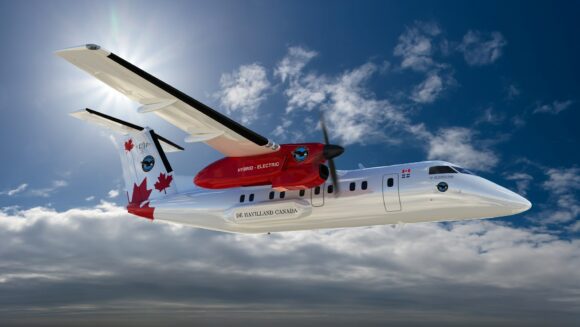Just before Christmas, on December 22, GE Aviation undertook the first run of its new ATP engine at its Prague facility. The launch application for the ATP will be the Cessna Denali. The aircraft is scheduled to fly in late 2018, while the ATP certification testing starts early in 2018.
We recently had a visit to the GE facility in Cincinnati where we were briefed on the engine. Its numbers are impressive. With a 16:1 overall pressure ratio the engine is expected to deliver a 20% lower fuel burn and 10% higher cruise power compared with competing engines (read PT-6). Time between overhaul is planned for 4,000 hours. The ATP, we were advised, is going to be a family from 1,000- to a 1,600-shp range. This means the engine can be used in several current programs.
The program is estimated to be 6-8 months ahead of schedule. This has been leveraged by rapid prototyping using additive manufacturing for tooling and prototype parts. The combustor design was seven months ahead of schedule, shortening the development timeframe considerably. GE introduced 79 new technologies into this engine class, many of which have been proven in other large engine programs. Additional technologies are expected to migrate into the program sustain competitive advantage once the program is up and running. There are 168 new technologies being applied to current programs that will be available to other programs for performance growth and cost reduction. Other technologies are being evaluated for future versions of ATP. These data points underscore how much of a big deal the ATP is for GE.
GE noted that the ATP is the first turboprop engine in its class to introduce two stages of variable stator vanes and cooled high-pressure turbine blades. The engine is at 35% additive. The ATP is GE’s heaviest use of additive in aero engines to date. 855 individual parts have been reduced to 12, providing lower costs and assembly efficiency. Additive manufacturing lowers engine weight by 5% and is limited to non-rotating parts. But that can change as GE works with new metal oxides for stronger additives. Additive improves airflow and this saves, according to GE, up to 2% specific fuel consumption.
An early identified need was simplifying the flying experience. “Fly the plane, not the engine.” This also taught them to think beyond simple mechanical operations. The goal was to get the ATP to reduce a pilot’s knowledge base workload by 65-70%. For example, by having full FADEC the pilot sets one item at start-up and the system will ensure no over speed, etc. Integrating the propeller control provides true cockpit simplicity.
Bottom Line: ATP is a new technology competitor that will leverage additive manufacturing in its first iteration to put some distance between itself and the PT-6. The 20% performance improvement over the PT6-67P is their shot across the bow. GE recognizes the PT-6 reliability and reputation. They have proposed a FADEC and electronic propeller control, both of which are technologies that are well known, but GE is putting them out there to differentiate themselves as technology leaders to counteract the PT-6 ubiquity and reliability reputation. They want to “one-up” the technology game and be known as the innovators. Additive, maintenance, and later, CMCs for improved thermal efficiencies are at the heart of their strategy.
Views: 5





